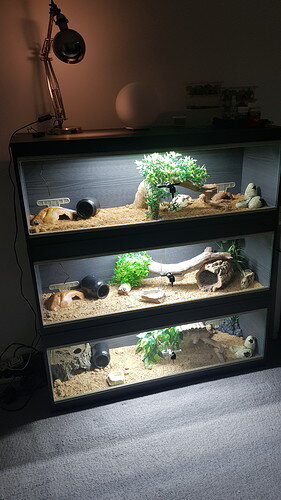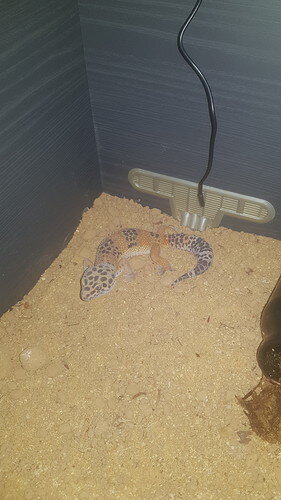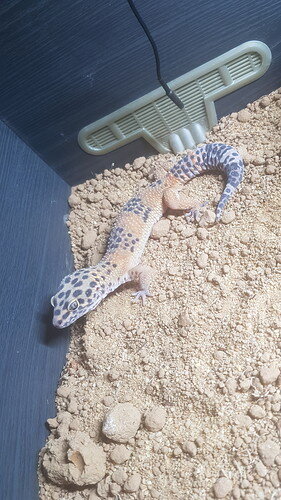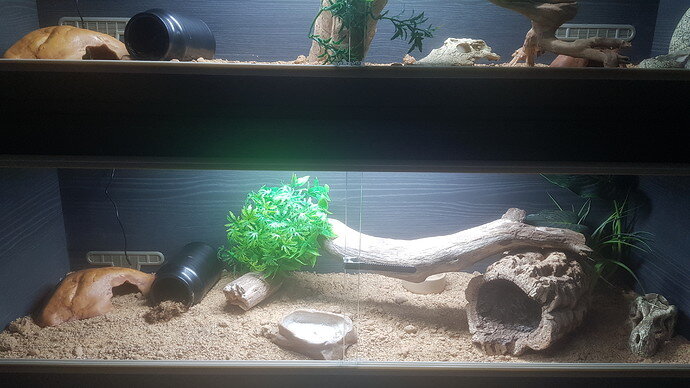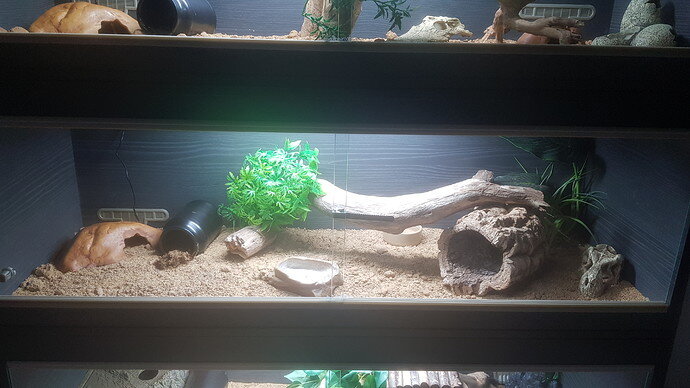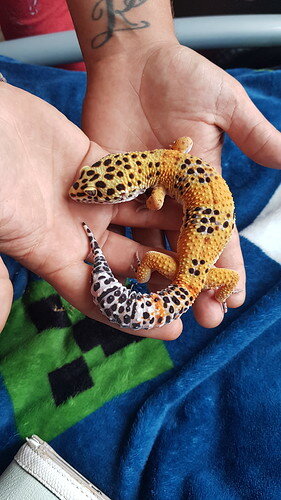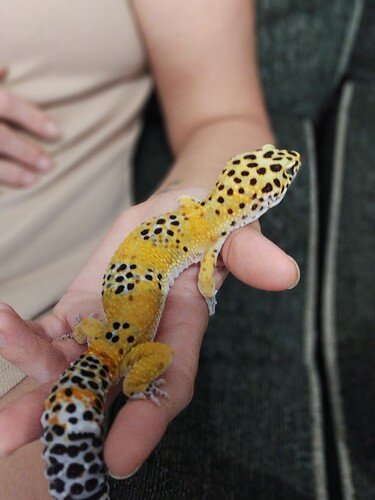My leopard gecko has looked like hes gonna go in to shed for the past week, hes looked frosty but not fully turnt white to peel. Can anyone just add advise please.
Can you add a picture? How old is he?
Pics posted
Is there a humid hide?
Yes they are the black ones in the pics, he doesn’t really go in there but I have noticed hes dug out his moss so that tell me hes not long been in his moist hide.
He looks more white now so I’m hoping it’s going to happen soon, this evening I also put him in a container(breathable) with some damp kitchen towel for ten mins. Since then hes obviously popped in to his damp hide and is turning more white.
But I dont believe its normal for them to be frosty for that long my other just shed tonight also but hers was about three days from start to finish. Everything went perfectly.
It looks like shed but it could also be sickness or an underlying problem. How do you feed, out of a dish or on the ground? What are the temperatures and humidity? What kind of substrate are you using? Loose substrate is not recommended since leopard geckos can become impacted. If you wanted to keep that substrate I would at least pack it down so it couldn’t be eaten.
He looks like my leos when they are “fired down”. When they aren’t super vibrant they get that frosty look to them. I don’t see anything that would be concerning.
I agree that the frostiness is probably not an issue. I have an adult gecko that looks ‘frosty’ about (1/3) of the time just normally. Since your gecko is a young adult, with a more stable size than a growing baby gecko, it won’t shed as often, so this could just be the first time you’re noticing the process. How long have you had him? @erie-herps is right, and a dull color can be a sign of illness, so keep your eyes out for any behavior changes or other signs. If he is acting normal & eating, then that’s probably just the way your wee man is.
The 10 minutes in a humid chamber was a good proactive step to take. You can also mist on days where it looks like a leo is about to shed, but don’t go nuts- it’s more important to maintain humidity in his humid hide, you don’t want super high humidity throughout the whole enclosure. Aside from potential for respiratory issues over time, unless your setups are bioactive you’re likely to get some mold.
Welcome to the community! there is a section for introduction posts if you’d like to make one. and share pics of all your babies. 
I’ve had him around three weeks, his feeding is done by tongs so I can track intake. His temp is between 27 and 28 degrees and he is acting normal, he was never handled that much and now he come out on to my hand on his own accord and is no longer as skittish. I will keep an eye on him and keep posting updates. Thank you to anyone with advice as it’s always welcome.
27 and 28 degrees?
He is probably referring in C* (Celsius)
Which is 80-82* F which is too cold and would cause those colors. I’m hoping this isn’t including the hotspot/warm side but a leopard gecko needs a hotspot of about 31-32* C (88-90* F).
Yes that’s completely accurate 
Good catch!
I agree with @erie-herps about the temperature and also that it could cause that appearance.
Right temps have been increased and I’m a female! Lmao.
I’m in the uk so I use degree degrees centigrade and upon reading up on these little guys it was repeatedly suggested to have the warm end of there enclosures at between 28 and 31 so I rolled with that. But I thought coming on here and asking was probably my better option.
That temperature is too cold so that is likely causing the problem. If you increased your temperatures that should fix it.
